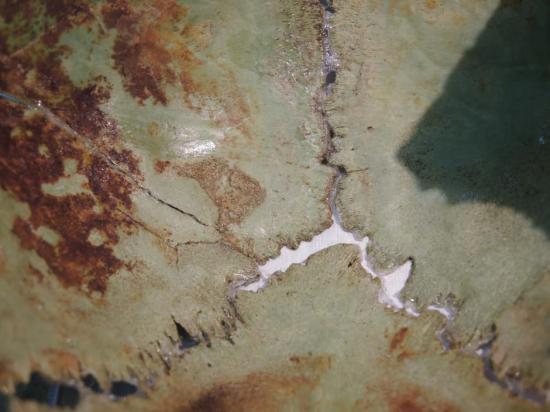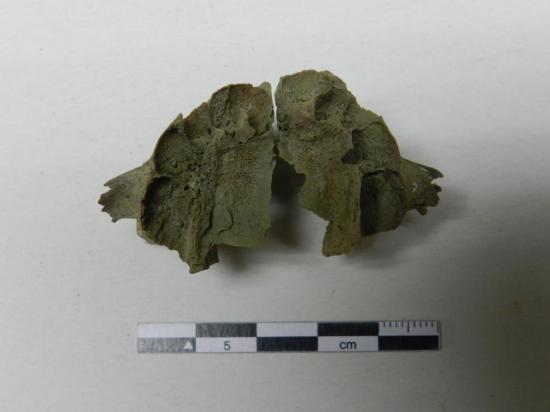Douglas Main
Source - http://www.newsweek.com/discovery-dead-infants-athenian-well-sheds-light-ancient-greek-society-341681
 A drawing from 1880 recreates what the Athens agora marketplace may have looked like in ancient Greece. Archaeologists in the 1930s uncovered a well with over 400 dead babies while excavating the site, a find unlike anything uncovered in the ancient world. UNIVERSAL HISTORY ARCHIVE/UIG/GETTY
A drawing from 1880 recreates what the Athens agora marketplace may have looked like in ancient Greece. Archaeologists in the 1930s uncovered a well with over 400 dead babies while excavating the site, a find unlike anything uncovered in the ancient world. UNIVERSAL HISTORY ARCHIVE/UIG/GETTY
In the 1930s, archaeologists started excavating the Athenian agora, the marketplace in the center of the ancient Greek city. Besides coming across the grand temples and statues for which the city is now known, they found something they originally thought mundane: a well, hewn into the bedrock.
They got a shock when they looked inside. There, they found the skeletons of hundreds of dogs and human infants. The disturbing assemblage of ancient dead mystified the archaeologists. Over the years, scholars put forward two main hypotheses to explain the bizarre find, which is unlike anything uncovered in the ancient world, unique in terms of both the number of dead babies and the inclusion of canine carcasses. Some ventured that the trove could be the mortifying result of a mass infanticide; others guessed a plague was to blame.
Over the last two decades, a team of researchers have wielded the latest technologies available to analyze the remains. They have concluded that neither of these hypotheses are likely correct. Their analysis, soon be submitted to Hesperia, an academic journal published by the American School of Classical Studies at Athens, casts a new and macabre light on ancient Athenian society.
 The reconstructed skull of an infant discovered in the ancient well shows a y-shaped fracture to the right of the midline at the back of the skull. A research team has determined that there were 450 dead infants in the well, along with 150 dogs and puppies, and the skeleton of one adult with some serious physical deformity. This latest work adds to those disturbing discoveries, building a case that, at the time, if a baby died, its body was discarded, not properly interred. MARIA A. LISTON/UNIVERSITY OF WATERLOO
The reconstructed skull of an infant discovered in the ancient well shows a y-shaped fracture to the right of the midline at the back of the skull. A research team has determined that there were 450 dead infants in the well, along with 150 dogs and puppies, and the skeleton of one adult with some serious physical deformity. This latest work adds to those disturbing discoveries, building a case that, at the time, if a baby died, its body was discarded, not properly interred. MARIA A. LISTON/UNIVERSITY OF WATERLOO
Maria Liston, a biological anthropologist at the University of Waterloo in Ontario, and her team determined that there were 450 dead infants in the well, along with 150 dogs and puppies, and the skeleton of one adult with some serious physical deformity. Mixed in with the bones, they found tons of pottery shards. By dating this material, Washington University in St. Louis archaeologist Susan Rotroff calculated that the bodies ended up there sometime between 165 and 150 B.C., at the end of the Hellenistic period following the conquests of Alexander the Great and shortly before the Romans invaded Greece.
The well babies appear to have died naturally, and not as part of some pandemic. All of the infants, save three, were less than a week old at the time of death, Liston says. Her study of the skulls suggests that as many as one-third died of bacterial meningitis, an infection of the brain and surrounding tissues often caused by cutting the umbilical cord with an unsterile object—still a common cause of death in some parts of the developing world. Meningitis leaves recognizable marks in the skull bones, Liston says. The other Greek babies, she adds, likely died from one of the many other diseases and health conditions common at the time, such as dehydration from diarrhea, that don’t leave any stamp on the skeleton.
The well was surrounded by several abandoned metalworking shops, and in it, archaeologists found a fair amount of bronze scraps. The copper from this alloy, which soaked into the bones when the well was filled with water, has strong antibacterial properties and likely explains why these materials are “remarkably well-preserved,” Liston says.
The question, though, is why the bones were in a well. The answer is also an explanation to a long-standing discrepancy in our understanding of the ancient world. “We know a large amount of babies died,” says John Papadopoulos, a professor of archaeology and classics at the University of California, Los Angeles, who wasn’t involved in this work. But for the most part, babies don’t make a big showing in the archaeological record. Archaeologists have found some babies buried in graves, but in other cases they have, for example, unearthed infant skeletons buried under floor boards and in city dumps.
 Over the last two decades, a team of researchers have wielded the latest technologies available to analyze the remains. Here, the Interior view of skull is shown with a close-up of a healing fracture. MARIA A. LISTON/UNIVERSITY OF WATERLOO
Over the last two decades, a team of researchers have wielded the latest technologies available to analyze the remains. Here, the Interior view of skull is shown with a close-up of a healing fracture. MARIA A. LISTON/UNIVERSITY OF WATERLOO
This latest work adds to those disturbing discoveries, building a case that, at the time, if a baby died, its body was discarded, not properly interred. This is because Greek babies, like those in Rome, weren’t considered full individuals until a special ceremony about a week to 10 days after birth, Rotroff explains. During this event, at which time the child was given his or her name, the head of the household (almost always the father) decided whether or not to rear the child. He could determine to not raise the baby for several reasons—for example, in the case of some type of deformity, or if the family was too big, or if the mother was unmarried. Sometimes, an unwanted baby would be left out in a public place in the hopes that it would be adopted. It wasn’t unusual for such children to be raised as slaves.
But if these noncitizen babies died before that ceremony, they’d perhaps end up at the bottom of a well. The team thinks that Athenian midwives took the infants to the well shortly after they had passed. It would have been an ideal location for such a deed. At the time of this burial, the well would’ve been located down a blind alley near the agora, easily accessible but out of sight. Liston muses that being dropped in a disused well may also have been considered more respectful than being thrown into the city dump.
Not all the babies died naturally. One 18-month-old infant shows signs of frequent abuse—multiple fractures throughout the body, including in the skull, at different degrees of healing. It’s likely the oldest example of a battered child ever found, Liston says. A final jaw fracture happened at the time of his or her death. These grim signs of abuse are so obvious even more than two millennia later that Liston says she’d “go to court…and testify that this was a battered child,” if it were a modern forensic case.
 A normal infant maxilla (upper jaw) and a cleft palate maxilla on the right are pictured. Biological anthropologist Maria Liston and the other archaeologists are used to creating “professional distance” from the bones of the humans they study. But at times the work was a bit too dark. “Four hundred fifty dead babies—that’s a lot of grieving parents and sorrow,” Liston says. MARIA A. LISTON/UNIVERSITY OF WATERLOO
A normal infant maxilla (upper jaw) and a cleft palate maxilla on the right are pictured. Biological anthropologist Maria Liston and the other archaeologists are used to creating “professional distance” from the bones of the humans they study. But at times the work was a bit too dark. “Four hundred fifty dead babies—that’s a lot of grieving parents and sorrow,” Liston says. MARIA A. LISTON/UNIVERSITY OF WATERLOO
Then there are the dogs. Zooarchaeologist Lynn Snyder says they were likely killed as sacrifices. Though birds and sheep were more common offerings, dogs were considered especially good for relieving “pollution,” Liston says. Childbirth, and the death of a young child, were both thought to be “polluting” circumstances, and Athenians may have killed dogs to help “cleanse” themselves, Liston says. The dogs were likely mutts, the generic “pariah dogs” still found wandering the streets of cities worldwide eating scraps, Snyder says. Oddly, these canine bones don’t bear marks of fatal trauma, although many of them do have healed fractures, suggesting they lived rough lives. It’s unknown, then, how Athenians killed these dogs, though perhaps it was by suffocation, Snyder says.
Liston and the other archaeologists are used to creating “professional distance” from the bones of the humans they study. But at times the work was a bit too dark. “Four hundred fifty dead babies—that’s a lot of grieving parents and sorrow,” she says. “And sometimes I just had to walk away and do something else for a while…. It is emotionally heavily charged.” But the work was worth it, they say, to better understand the plight of unwell children thousands of years ago.
The well resided in what is now a leafy, hilly area between the Ancient Agora Museum—where hundreds of tourists visit daily to marvel at the millions who have lived, died and passed through this ancient city over the millennia—and the Temple of Hephaestus, which looks the same as when it was built more than 2,400 years ago. Gone are the dead who once filled the well, mostly newborns that never really tasted life. All that remains of the well is a small depression in the ground. There, a scraggly pine tree grows, its trunk’s twisted shape looking not unlike a question mark.